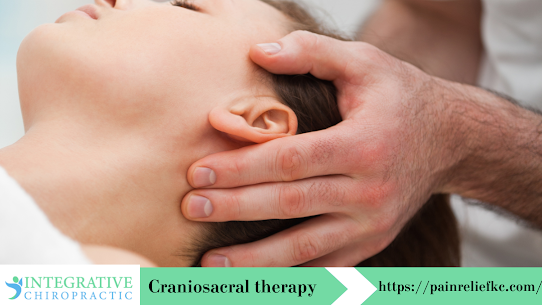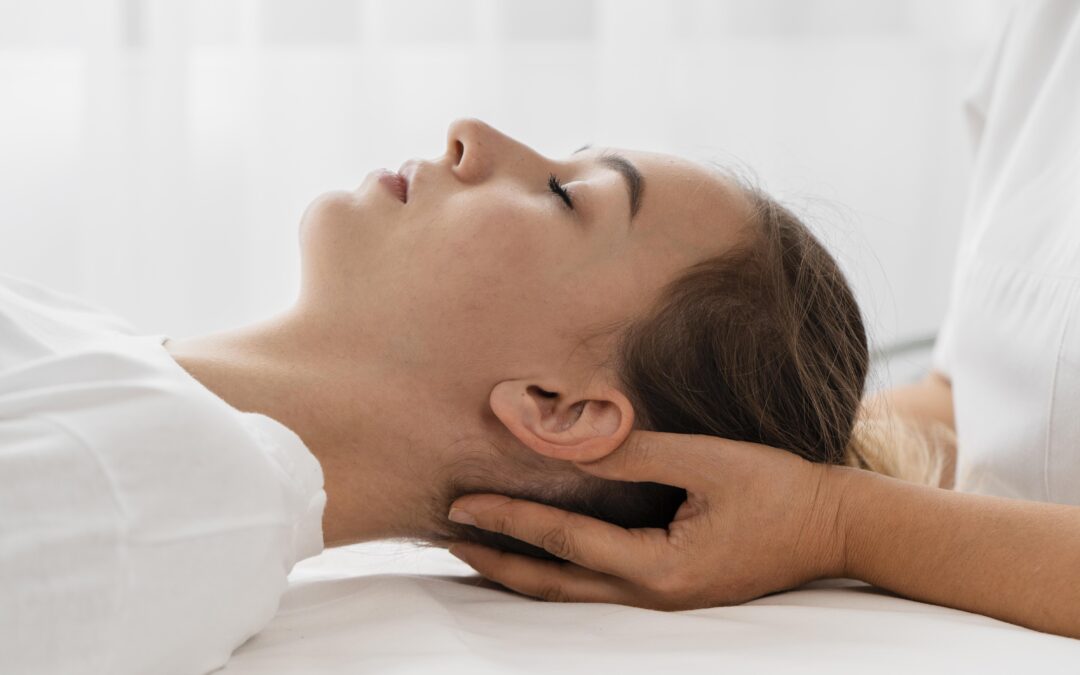Are you looking for a holistic approach to wellness that promotes physical, emotional, and mental health? Look no further than Craniosacral Therapy. This gentle, non-invasive therapy is based on the idea that the craniosacral system (the membranes and fluid that surround the brain and spinal cord) plays a crucial role in our overall health and well-being. In this blog, we will explain what is Craniosacral Therapy, how it works, and what you can expect during a session. We will also delve into the benefits of Holistic Craniosacral Therapy, including real-life experiences of people who have benefited from this therapy. Lastly, we will discuss scientific evidence supporting Craniosacral Therapy and who can benefit from it. So sit back and read on to learn about this amazing therapy that can help you achieve optimal wellness.
Understanding Craniosacral Therapy
Understanding Craniosacral Therapy: A non-invasive, holistic approach that focuses on the craniosacral system’s role in whole person wellness. This gentle and relaxing treatment addresses imbalances in the body, incorporating principles from traditional Chinese medicine.

Origins and Principles of Craniosacral Therapy
Craniosacral Therapy, developed by osteopath Dr. John Upledger in the 1970s, is based on the concept of the craniosacral rhythm. It emphasizes the body’s self-healing ability and the connection between the central nervous system and overall health. This holistic approach considers the physical, emotional, and energetic aspects of the body.
How does Holistic Craniosacral Therapy work?
Holistic Craniosacral Therapy works by using gentle touch to release tension, promote relaxation, and balance the central nervous system. It facilitates the flow of cerebrospinal fluid, enhances circulation, reduces inflammation, and addresses the specific needs of each individual.
The Role of the Craniosacral System in Health
The craniosacral system plays a vital role in maintaining overall well-being and vitality. It protects and nourishes the spinal cord and brain, supports a healthy functioning nervous system, and can impact physical, emotional, and mental health. Imbalances in this system may contribute to various conditions.
The Process of Holistic Craniosacral Therapy
The process of holistic craniosacral therapy begins with an initial assessment to understand the individual’s needs. Gentle touch techniques are then applied to specific areas, encouraging the body’s natural healing response. Sessions typically last around 60 minutes, and the frequency is determined based on individual goals and progress.

Preparing for your first Craniosacral Therapy Session
When you prepare for your first craniosacral therapy session, it’s important to wear comfortable clothing for ease of movement. Provide your relevant medical history and current concerns, and don’t hesitate to communicate any discomfort or preferences during the session. Relax and trust in the therapist’s expertise, keeping in mind that results may vary for each person.
Benefits of Holistic Craniosacral Therapy for Wellness
- – Relieves physical and emotional stress
- – Promotes deep relaxation and improves sleep quality
- – Alleviates chronic pain, including back pain
- – Eases symptoms of migraines and tension headaches
- – Enhances overall well-being and promotes self-healing
Case Studies and Personal Experiences
Case studies and personal experiences provide evidence of the effectiveness of holistic craniosacral therapy. Testimonials from individuals who have benefited from this therapeutic approach highlight improvements in various health conditions, increased vitality, and an improved quality of life. These real-life examples illustrate the positive outcomes of craniosacral therapy.
Scientific Research on Craniosacral Therapy
Scientific research on craniosacral therapy confirms its effectiveness, with studies validating positive outcomes in various conditions. The therapy’s impact on the central nervous system has been validated, and it is recognized as a complementary therapy option. Exploration of the mechanisms and physiological changes during therapy contributes to growing clinical evidence.

Clinical Evidence supporting Craniosacral Therapy
Clinical evidence supporting craniosacral therapy includes reduced stress hormones, improved cognitive function, decreased pain in chronic conditions, positive outcomes for anxiety and depression, and enhanced well-being reported by patients.
Who can benefit from Craniosacral Therapy?
Discover the wide-ranging benefits of Craniosacral Therapy. This holistic approach can address imbalances in the body, provide relief from back pain and inflammation, enhance overall wellness, improve circulation, and promote relaxation. Experience the personalized benefits of Craniosacral Therapy for your specific needs.
How can Holistic Craniosacral Therapy complement other therapies?
Combine the gentle touch of Craniosacral Therapy with massage or chiropractic for a comprehensive treatment. Enhance the effects of traditional Chinese medicine by incorporating Craniosacral Therapy. Support your physical therapy sessions with the holistic benefits of Craniosacral Therapy. Explore how Craniosacral Therapy can work alongside acupuncture to optimize your wellness journey. Harness the power of Craniosacral Therapy to complement and augment other therapeutic approaches.
Are there any potential risks or side effects involved?
Potential Risks and Side Effects of Craniosacral Therapy: Before trying Craniosacral Therapy, it’s important to understand its safety. This gentle therapy minimizes potential side effects, making it generally well-tolerated. With its non-invasive nature, you can explore the benefits of Craniosacral Therapy with peace of mind.
Conclusion
In conclusion, holistic craniosacral therapy offers a gentle and non-invasive approach to promote overall wellness. By addressing the craniosacral system and its role in maintaining health, this therapy can help alleviate various physical and emotional conditions. It is important to note that craniosacral therapy should be seen as a complementary therapy and not a replacement for medical treatment. However, numerous case studies and personal experiences have shown its positive effects on individuals. Additionally, scientific research has provided clinical evidence supporting the benefits of craniosacral therapy. Whether you are seeking relief from chronic pain, stress, anxiety, or simply looking to enhance your well-being, craniosacral therapy may be a beneficial option for you. Consult with a qualified practitioner to determine if this therapy is suitable for your needs.

